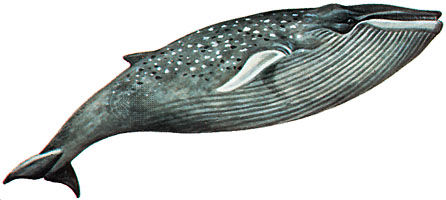Principal Scientists Kevin Glover at Institute of Marine Research, Norway has revealed a hybrid whale DNA hunted in the northeastern Atlantic in 2007. The whale had the genetic blueprint of a hybrid, with an Antarctic minke mother and Northern minke whale father, Mr Glover came across this surprise while analyzing whale DNA recently.
Soon after Norwegians resumed commercial whale hunting in 1993—following a brief moratorium—the country established a DNA registry to analyze whale kills and help ensure that whale products come from legal sources.
After the first analysis, Glover came to know about another similar strange looking whale hunted in 1996 from one of his colleague. It didn’t have the white patch on its pectoral flippers like the northern minke whales do. He suspected this 15 year old whale to be of the same hybrid.
So Glover analyzed the DNA of the 1996 whale captured in the North Atlantic, and found a shocker: It was a pure Antarctic whale. The sample had been overlooked because the DNA archive was in its infancy when the whale was captured.
This Antarctic whale in the Arctic provided further evidence that Antarctic minkes can migrate to the home waters of their northern relatives and—as the hybrid shows—even mate with them.
Normally the two whale species, Antarctic minke whale and Northern minke whale, both of which can reach 35 feet (11 meters) in length—undertake seasonal migrations that separate them by many miles of ocean.
Northern minkes head toward the North Pole in spring and ply waters up to the edge of Arctic ice during the summer. In autumn these whales head south, nearly as far as the Equator, to spend the winter.
Antarctic whales follow a similar pattern, moving between Antarctic ice and warmer mid-latitudes with the seasons.
But because the two hemispheres’ seasons are opposite, the minke species don’t share near-equatorial waters at the same time. Thus, they were never thought to meet—until now.
The discovery has now opened new questions to the scientists. Is the hybrid whale a fluke, or the beginning of a trend? No one knows, but Glover said that his whale biologist colleague Nils Øien has an interesting theory.
Japanese studies showed that the numbers of Antarctic minke in the Southern Hemisphere appeared to drop significantly between the 1980s and 1990s. Other studies show that supplies of the krill—tiny marine crustaceans—that fuel the Antarctic food chain also dropped during this period.
“Japanese research has even shown that the fat layer on whales down there has decreased—not to the point of malnutrition, but suggesting a decreased access to food,” Glover said.
“So we speculate that the amount of krill and available food has decreased, and maybe as a result the whales are starting to go scouting for food.
“It could be that these individuals are straying away from their territory in the search for food, and a few of them may have found their way to the Arctic Circle.”
We hope Scientists will soon come to a conclusion!




Recent Comments